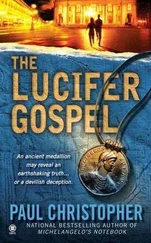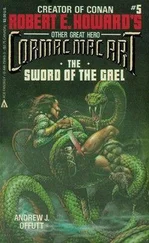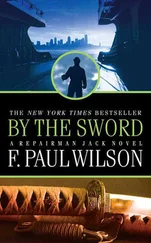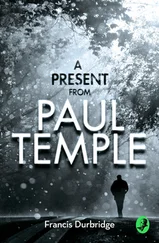Paul Christopher - The Sword of the Templars
Здесь есть возможность читать онлайн «Paul Christopher - The Sword of the Templars» весь текст электронной книги совершенно бесплатно (целиком полную версию без сокращений). В некоторых случаях можно слушать аудио, скачать через торрент в формате fb2 и присутствует краткое содержание. Жанр: Триллер, на английском языке. Описание произведения, (предисловие) а так же отзывы посетителей доступны на портале библиотеки ЛибКат.
- Название:The Sword of the Templars
- Автор:
- Жанр:
- Год:неизвестен
- ISBN:нет данных
- Рейтинг книги:3 / 5. Голосов: 1
-
Избранное:Добавить в избранное
- Отзывы:
-
Ваша оценка:
- 60
- 1
- 2
- 3
- 4
- 5
The Sword of the Templars: краткое содержание, описание и аннотация
Предлагаем к чтению аннотацию, описание, краткое содержание или предисловие (зависит от того, что написал сам автор книги «The Sword of the Templars»). Если вы не нашли необходимую информацию о книге — напишите в комментариях, мы постараемся отыскать её.
The Sword of the Templars — читать онлайн бесплатно полную книгу (весь текст) целиком
Ниже представлен текст книги, разбитый по страницам. Система сохранения места последней прочитанной страницы, позволяет с удобством читать онлайн бесплатно книгу «The Sword of the Templars», без необходимости каждый раз заново искать на чём Вы остановились. Поставьте закладку, и сможете в любой момент перейти на страницу, на которой закончили чтение.
Интервал:
Закладка:
Holliday stood in the middle of what once had been the oratory, or chapel, of the villa. The walls were no more than a few stones high, and part of the charred floor had sagged and tipped into the cellar below.
Often when he stood in places like this Holliday could almost hear the voices calling to him out of the past. A long time ago, standing on Burnside’s Bridge at Antietam, he’d felt the vibration of men’s feet and the thunder of horses’ hooves as Union and Confederate soldiers fought in the bloodiest battle of the Civil War. Walking down the broad boulevard of the avenue des Champs-Йlysйes in Paris, it was the deep-throated rumble of German tanks that haunted him, history come alive in his imagination. But this was a dead place; even the ghosts had gone.
“You were right,” he said to Peggy. “It was a waste of time. There’s nothing here.”
“Look,” she answered, pointing.
Holliday followed her pointing hand. A short, somewhat stooped man was approaching them from the direction of the stand of bushy walnut trees. He was carrying a wicker basket and wore the distinctive white habit and black scapular apron of a Cistercian monk: the order founded by St. Alberic of Cоteaux, the spiritual father of the Knights Templar and the author of De laudibus novae militiae, the text embedded with the coded message of the Templar sword.
17
They walked out of the ruined oratory and met the monk as he came across the open field. From the white hair peeping out from beneath his wide straw sun hat, his spectacles, and his wrinkled face, the monk looked to be in his mid-seventies, but still too young to have been anything more than a very small child when Lutz Kellerman gave his destructive order.
When he spoke the monk’s voice was soft and evenly modulated. The basket in his hand was full of walnuts.
“Il mio nome и Fratello Timothy. Lo posso aiutare?” My name is Brother Timothy, may I help you?
“Parla inglese?” Holliday asked. His Italian was fluent, but Peggy barely knew enough phrases to order a meal.
“Yes, of course,” answered Brother Timothy. The accent was cultured and intelligent.
Holliday decided not to beat around the bush.
“This is the Villa Montesano where the Archives were destroyed in 1943?”
“Yes,” said Brother Timothy.
“By an SS officer named Lutz Kellerman?”
“He did not leave his name, Mr…?”
“Holliday. Doctor, as a matter of fact.”
Better to use whatever ammunition you had.
“Ah,” said Brother Timothy. “And your companion?”
“My name is Peggy,” she replied. “Blackstock.”
“Ah,” said Brother Timothy once again. “An interesting name. Black stockings were an article of formal dress in seventeenth-century England, rather than the more informal blue stockings worn by the masses. Perhaps that is the origin of your name.” He gestured toward the basket at his feet. “I have been gathering walnuts for some experiments I am doing regarding the use of walnut extract as a high blood pressure supplement. Perhaps you’d like to tell me what you are doing here.” It wasn’t a question.
An etymologist and a research scientist in a monk’s habit. An interesting combination. The message was clear: Brother Timothy was no country bumpkin and nobody’s fool. Holliday silently reminded himself to tread carefully.
“It’s complicated,” said Holliday, hesitating. The monk picked up his basket of walnuts.
“I’m a tired old man,” said Brother Timothy. “I should not stand about too long in the hot sun. My feet swell up like little sausages. Perhaps you’d like to join me for a cup of tea? I keep a few things in the gardener’s cottage.”
The monk led the way, and they followed.
The potting shed was a single, cozy room, windows on all sides, walls lined with shelves loaded down with stacks of terra-cotta flowerpots. The floor was made of fitted paving stones covered with a single braided-rope rug. Brother Timothy had made a little haven underneath one window with a small desk, a camp stove, a kettle, an old brown teapot, and several pottery mugs. There were a few small lemons in a little wooden bowl, a paring knife, and a glass jar full of sugar cubes. Above the kitchen things there was a shelf with several dusty books. Holliday read one of the titles: Nova genera et species plantarum by Alexander von Humboldt and Aimй Bonpland. Beside it was what appeared to be an Italian edition of George Nicholson’s Dictionary of Practical Gardening.
There were two old chairs and a padded leather ottoman. The cell-like room smelled comfortably of pinewood and baked clay. The monk busied himself making tea for a few moments then sat down in one of the chairs, gesturing for Holliday and Peggy to seat themselves, as well. Peggy perched herself on the ottoman, and Holliday took the other chair.
“We’re here about the sword,” he said slowly, watching Brother Timothy’s face for a reaction. There was none.
“Sword?” Brother Timothy replied, his expression politely curious.
“A Templar sword found by Amedeo Maiuri in the ruins of Pompeii and presented to Adolf Hitler by Il Duce, Benito Mussolini.”
Brother Timothy laughed.
“Why would a Templar sword be found in Pompeii?” the monk said. “Vesuvius erupted in 79 A.D., long before the Crusades. And why would a renowned Italian archaeologist like Amedeo Maiuri give anything at all to Mussolini and that thug Hitler? I’m afraid someone has been telling stories to you.”
“Perhaps as you are telling stories to me?” Holliday answered. “French historians say that the Templars were founded by Hugues de Payens, a knight of Champagne, but there is a great deal of evidence to show that Hugues de Payens was actually an Italian named Hugo de Paganis from Nocera dei Pagani in Campa nia, whose largest city is Naples. In a straight line the town of Nocera is about fifteen miles from Pompeii, a little farther if you travel on the coastal road, which anyone would have taken back then if they were on their way to Naples. The sword could very easily have been found in Pompeii.”
“You know something of the Templars, I see,” nodded Brother Timothy. He poured the tea. “Lemon? Sugar?”
They took both.
Holliday continued.
“I also know that the sword found by Maiuri has an inscription on it: Alberic in Pelerin fecit. Made by, or for, Alberic in Castle Pelerin, the last crusader castle of the Templars in the Holy Land. St. Alberic of Cоteaux, the founder and patron saint of the Cistercian Order. Your order, Brother Timothy.”
“You really do seem to know a great deal, Dr. Holliday,” said Brother Timothy calmly, sipping his tea.
“I also know that this sword had a coded message embedded in it and that the key to that code lay in a particular copy of De laudibus novae militiae, a letter written by-”
“A letter written by St. Alberic of Cоteaux to Hugues de Payens, or Hugo de Paganis, depending on your point of view,” completed Brother Timothy. “That particular copy having been hidden among the tens of thousands of books and papers in the Naples State Archives, which were once stored in this very place.” The elderly monk smiled pleasantly. “As the hippies used to say back in the days of my youth, Dr. Holliday, life is a wheel and what goes around indeed does come around again.”
“You know about the sword then?” Holliday asked.
“Certainly. I have known about it for many years. Sometimes it is called the Sword of Pelerin, the One True Sword, the True Sword of Pelerin. Another myth of the Crusades.”
“No myth,” said Holliday. “The sword exists, believe me.”
“How do you happen to know of the letter?” Peggy asked.
“Because of the warning on the cover of the holy letter written by St. Alberic: ‘The words within shall only be known to the holder of the True Sword of Pelerin.’ The cover is made of solid silver, the words chased in gold.”
Читать дальшеИнтервал:
Закладка:
Похожие книги на «The Sword of the Templars»
Представляем Вашему вниманию похожие книги на «The Sword of the Templars» списком для выбора. Мы отобрали схожую по названию и смыслу литературу в надежде предоставить читателям больше вариантов отыскать новые, интересные, ещё непрочитанные произведения.
Обсуждение, отзывы о книге «The Sword of the Templars» и просто собственные мнения читателей. Оставьте ваши комментарии, напишите, что Вы думаете о произведении, его смысле или главных героях. Укажите что конкретно понравилось, а что нет, и почему Вы так считаете.











